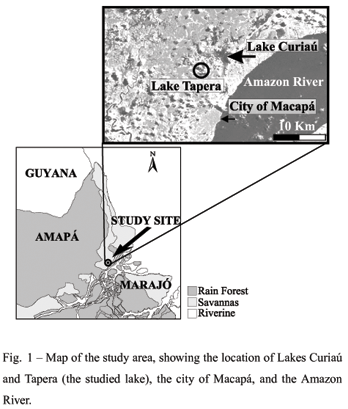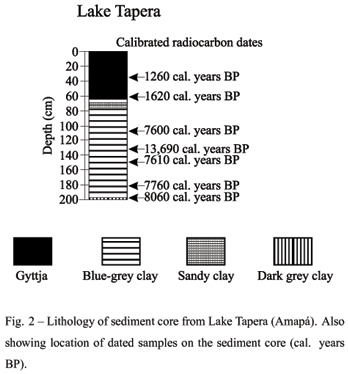Pollen, charcoal, and C14 analyses were performed on a sediment core obtained from Lake Tapera (Amapá) to provide the palaeoenvironmental history of this part of Amazonia. A multivariate analysis technique, Detrended Correspondence Analysis, was applied to the pollen data to improve visualization of sample distribution and similarity. A sedimentary hiatus lasting 5,500 years was identified in the Lake Tapera. Because the timing of the hiatus overlapped with the highest Holocene sea-level, which would have increased the local water table preventing the lake from drying out, it is clear that sea-level was not important in maintaining the lake level. Lake Tapera probably depended on riverine flood waters, and the sedimentary gap was caused by reduced Amazon River discharge, due to an extremely dry period in the Andes (8,000-5,000 years BP), when precipitation levels markedly decreased. The lack of Andean pollen (river transported) in the record after this event supports this interpretation. The pollen analysis shows that when sedimentation resumed in 1,620 cal. years BP, the vegetation around the lake was changed from forest into savanna. This record demonstrates the need to improve our understanding of climate changes and their associated impacts on vegetation dynamics.
vegetation change; hydrology change; Amazonia; pollen record; climate change







